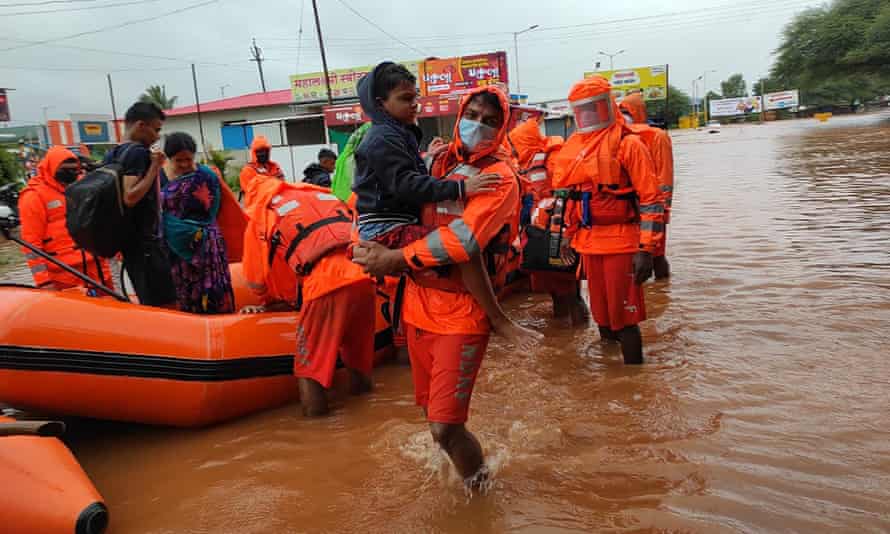India floods: rescuers search for survivors among mud and debris
Death toll from heavy monsoon rains on western coast climbs to 115, with nearly 90,000 people evacuated

Rescuers in India combed through mud and debris on Saturday in a desperate search for survivors as the death toll from heavy monsoon rains climbed to 115, with nearly 90,000 people evacuated.
Torrential downpours have lashed India’s western coast in recent days, leaving dozens missing near the financial capital of Mumbai and causing the worst floods in decades in the resort state of Goa.
“People have lost virtually everything,” said Goa’s health minister, Vishwajit Rane, adding the state had not seen such heavy rains in half a century.
He said more than 1,000 houses had suffered serious damage in the area as rising waters flooded homes.
Goa’s floods were its worst in decades, according to its chief minister, Pramod Sawant, who said the monsoons had caused “widespread damage” but no casualties, unlike in neighbouring Maharashtra state.
More than half of the deaths occurred in hard-hit Raigad, south of Mumbai, where landslides buried dozens of houses, killing 47 and with another 53 feared trapped under layers of mud.
The downpour caused the Savitri River to burst its banks, leaving the town of Mahad completely inaccessible by road, and prompting terrified residents to climb on to rooftops and upper floors to escape swelling waters.
National disaster response force teams could not land helicopters in the area due to bad weather on Friday but were eventually able to rescue locals as waters began to recede.
The hillside resort of Mahabaleshwar recorded nearly 60cm (23in) of rain in a 24-hour period ending Friday morning, the India meteorological department said.
Rescue teams and military units worked to evacuate stranded people but their operations were hampered by landslides blocking roads, including the main highway between Mumbai and Goa.
Water levels rose to nearly 20ft (6m) on Thursday in areas of Chiplun, south of Mumbai, after 24 hours of uninterrupted rain submerged roads and homes.
“Contact from the town was completely cut off due to land routes being inundated,” the Maharashtra state government said.
Seven naval rescue teams equipped with rubber boats, lifejackets and lifebuoys were sent to the affected areas, along with specialist divers and a helicopter to airlift marooned residents. Nearly 90,000 people have been evacuated in Maharashtra so far.
India’s weather bureau has issued red alerts for several regions in the state and has forecasted heavy rainfall will continue for the next few days.
Flooding and landslides are common during India’s monsoon season, which also often causes poorly constructed buildings and walls to buckle after days of non-stop rain.
Four people died before dawn on Friday when a building collapsed in a Mumbai slum, authorities said. The incident came less than a week after at least 34 people died when several homes were crushed by a collapsed wall and a landslide in the city.
Rainwater also inundated a water purification complex in Mumbai last weekend, disrupting supply “in most of the parts” of the megacity of 20 million people, civic authorities said.
Roxy Koll, a climate scientist at the Indian Institute of Tropical Meteorology, said the monsoon flooding was “unprecedented, but not unexpected”. He tweeted: “We already see a threefold rise in widespread extreme rains that cause floods across India.”
The climate crisis is making India’s monsoons stronger, according to a Potsdam Institute for Climate Impact Research report published in April that forecast dire consequences for food, farming and the economy affecting nearly a fifth of the world’s population.